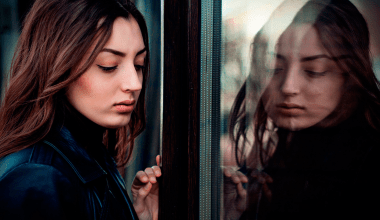Music photography is a vibrant art form that captures the energy, emotion, and charisma of live performances, as well as the personalities of musicians. Whether you’re an aspiring photographer or an experienced shutterbug looking to explore a new niche, music photography offers endless opportunities for creative expression.
From snapping candid backstage moments to freezing the explosive energy of a live concert, music photography combines technical skill and artistry. This blog dives deep into the world of music photography, offering insights into techniques, essential gear, post-processing tips, and much more.
What is Music Photography?
Music photography is the practice of capturing images related to music, including live performances, artist portraits, promotional materials, and behind-the-scenes moments. It is a genre that demands quick thinking, technical expertise, and a deep appreciation for music.
Synonyms like concert photography, live music photography, and gig photography often overlap with this term. Whether you’re photographing a small indie band in a local club or a superstar on a massive stage, the goal is to translate the magic of music into compelling visuals.
Why Music Photography is Unique
Music photography is unlike other types of photography because it blends dynamic environments, unpredictable lighting, and high-energy subjects. The challenges, such as low-light conditions and fast-moving performers, make this genre exciting and rewarding.
The vibrant world of music photography allows you to become part of a creative ecosystem, working with musicians, promoters, and fans. It’s not just about capturing moments—it’s about telling the story of music through your lens.
Essential Gear for Music Photography
Your equipment plays a crucial role in music photography. Here’s what you need to get started:
1. Camera
A DSLR or mirrorless camera with excellent low-light performance is a must. Popular choices include the Canon EOS R series or the Sony Alpha series.
2. Lenses
- Wide-angle lenses for capturing the entire stage or large crowds.
- Prime lenses (e.g., 50mm f/1.8) for stunning portraits.
- Telephoto lenses for zooming in on performers from a distance.
3. Accessories
- Extra batteries and memory cards.
- A sturdy yet portable tripod or monopod.
- Lens cleaning kits to ensure clear images.
Investing in reliable gear will help you overcome the unique challenges of music photography.
Mastering Techniques in Music Photography
Successful music photography requires a blend of technical skills and artistic intuition. Here are key techniques:
1. Understand the Lighting
Concert venues often have unpredictable and low-light conditions. Familiarize yourself with the venue’s lighting setup and adjust your camera settings accordingly.
2. Use the Right Settings
- Shutter speed: Keep it fast (1/250 or higher) to freeze motion.
- Aperture: Use a wide aperture (f/2.8 or lower) to let in more light.
- ISO: Push your ISO higher when necessary, but watch out for noise.
3. Focus on the Details
Capture close-ups of instruments, the artist’s facial expressions, or even the crowd’s reaction to create engaging compositions.
Building a Portfolio in Music Photography
Your portfolio is your calling card in the competitive world of music photography. Here’s how to build an impressive collection:
1. Start Small
Photograph local gigs and small concerts to gain experience and build confidence.
2. Collaborate with Musicians
Offer free or discounted shoots for emerging artists. This builds connections and adds diversity to your portfolio.
3. Showcase Variety
Include a mix of live shots, portraits, and behind-the-scenes images to demonstrate your versatility.
Capturing Emotion in Music Photography
The best music photography conveys emotion, telling a story that resonates with viewers. Here are tips to capture emotion:
- Focus on the artist’s expressions and gestures.
- Highlight moments of interaction between band members or with the audience.
- Experiment with black-and-white photography for a dramatic effect.
Post-Processing Tips for Music Photography
Editing is a crucial step in music photography. Use software like Adobe Lightroom or Photoshop to enhance your photos. Key adjustments include:
- Exposure correction: Balance out poorly lit images.
- Color grading: Enhance the mood of your shots with thoughtful color choices.
- Sharpening: Highlight details in your images.
Networking and Building Your Brand in Music Photography
Establishing yourself in the music photography scene requires more than just taking great photos. Here’s how to build your brand:
- Create a strong online presence: Use social media and a personal website to showcase your work.
- Network with industry professionals: Attend events, meet musicians, and collaborate with other creatives.
- Stay consistent: Regularly update your portfolio and social media profiles to stay relevant.
Challenges in Music Photography (and How to Overcome Them)
1. Low Light
Invest in fast lenses and master post-processing techniques.
2. Limited Access
Build relationships with venue managers or bands to secure press passes.
3. Crowded Venues
Learn to navigate through crowds and find creative angles for unique shots.
Inspiring Music Photographers to Follow
Learning from the best can elevate your skills. Explore the work of legendary music photographers like:
- Jim Marshall: Known for iconic shots of rock legends.
- Annie Leibovitz: Renowned for stunning portraits.
- Ross Halfin: Famous for capturing heavy metal bands.
Conclusion:
Music photography is more than just capturing images; it’s about preserving the spirit of music for generations to come. Whether you’re documenting a high-energy concert or creating intimate portraits of artists, every shot is an opportunity to tell a story.
With the right gear, techniques, and passion, you can master the art of music photography and carve out a niche in this exciting field. So grab your camera, immerse yourself in the rhythm, and start creating unforgettable images today!
Related Articles:
For further reading, explore these related articles:
- LP Meaning in Music: A Beginner’s Guide to Long-Playing Records and Their Legacy
- Music Press Release Template: Your Complete Guide to Promoting Your Music
- Music Promotion Services: How to Grow Your Music Career
For additional resources on music marketing and distribution, visit Deliver My Tune.






